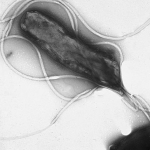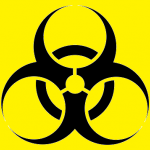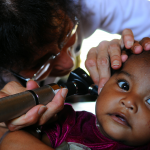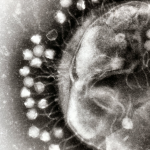Influenza is far deadlier than the Wuhan coronavirus, but few people worry about it. However, new diseases are scary and when information is limited, over-reactions are rational.
infectious disease
On May 15, 1850, effective treatment for the coronavirus and its infectious friends was put forward, subsequently ridiculed, and now ignored -- at our collective peril. Wash your hands. Fairly simple, yet so challenging to do. And a new study looks at how not washing your hands hastens global pandemics.
Boeing has designed self-cleaning airplane bathrooms that implement UV light. To stop the spread of infectious disease, the entire airplane cabin -- and perhaps other public places -- should also be bathed in UV light.
Infectious diseases, such as influenza and tuberculosis, kill millions every year. But an infectious disease can kill in another way: by causing cancer. The good news is that many of these infections are preventable or treatable.
Why do microbes kill some people but not others? This is one of the hardest questions to answer in medical microbiology. Here's what we know about the senator's tragic death from the rare tickborne virus.
Is leptospirosis, an infection from a bacterium that's transmitted through contact with urine, on the rise among dogs in Utah and Colorado, as headlines declare? Possibly. Maybe an optional leptospirosis shot for the pooch isn't a bad idea.
Mosquitoes suck, both literally and figuratively. No other animal on Earth is responsible for more human deaths than the lowly mosquito. The mosquito-borne virus that causes EEE (or Triple E) is the latest to cause public concern. Here's what you need to know about it.
"Things have not gotten as stupid as they are going to get." That was a 2015 tweet from John Tabin, co-host of a podcast called "The Bureau of Alcohol, Tobacco, and Friends." It's fair to say, judging solely by infectious disease stories, that since then his prophecy has been fulfilled several times over.
Disease X -- a yet unseen deadly infectious disease with an epidemic potential for which no countermeasures exist -- has recently been added to WHO's Blueprint list of priority diseases of concern to public health. While we don’t know what Disease X might be, it reflects the fact that a future pandemic threat may be unexpected.
With the hope of increasing accessibility for a burdensome medical issue, can this application actually make a dent as a screening or diagnostic tool?
Promising work just published in the journal Nature Medicine offers hope when antibiotic resistance, in an extremely sick patient, renders limited treatments.
There are 14 new HIV infections in an outbreak that's hit homeless drug users in the Seattle area. These are the predictable consequences of a feckless public health policy, and one that lacks compassion.











